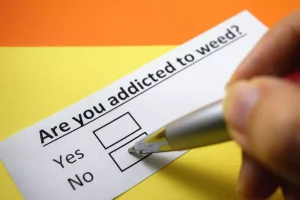The Semel Institute for Neuroscience and Human Behavior states that about 75% of people recovering from AUD experience PAWS. However, there is no information on how many people these symptoms specifically affect. The Diagnostic and Statistical Manual of Mental Disorders, 5th edition (DSM-5) does not recognize the terms dry drunk syndrome and PAWS. PAWS is a series of psychological and mood-related symptoms that can occur after a person stops taking a substance. It’s equally important to explore the habits and reasons behind your drinking, ideally with a qualified therapist.
Getting Help for Dry Alcoholics
Her fields of interest include Asian languages and literature, Japanese translation, cooking, natural sciences, sex positivity, and mental health. In particular, she’s committed to helping decrease stigma around mental health issues. It’s best to have some kind of extra support during recovery, whether that’s a 12-step program or a regular appointment with a therapist who specializes in addiction counseling. Remember that addiction is a serious disease, and you’re doing the best you can. Try to nurture feelings of patience and self-love, especially on the days you feel those emotions the least. Recovery can be extraordinarily difficult and bring up feelings of hopelessness.
Dry Drunk Syndrome: What It Is, Symptoms and Treatment
In the meantime, there are a few things you can do to support them. Still, there are things you can do to manage these symptoms and minimize their impact on your life. “Given that relapse is a process, it can be identified and interpreted before use happens,” she says.
Is dry drunk syndrome a sign of relapse?
If someone has never sought treatment for alcoholism, or is unable to function in their daily routine, intensive treatment within an inpatient rehab program may be needed. Many people who aren’t in recovery from an addiction themselves can often be confused about how a person can be sober and still behave as they did while drunk. It seems more reasonable that, once a person becomes sober, things can only get better. Now that you’re no longer drinking, you have a chance to embrace your sober life and redefine your passions.
Dry January: A Positive Start to the New Year
However, some people consider it to be part of post-acute withdrawal syndrome (PAWS). Outside of therapy, don’t forget to take care of yourself and your needs. Make sure you’re prioritizing your own self-care what is alcoholism throughout their recovery process. Spending time with your loved one, especially on activities you both enjoy, may help them feel more positive and optimistic about life in general. Hobbies can also help create a distraction from thoughts of drinking. Keep in mind that these hobbies might not feel quite as enjoyable during the early stages of recovery.
Entering sobriety after a short or long-term struggle with alcohol abuse is no small feat. Getting a person to stop drinking can be reassuring, especially for loved ones. People that do not receive treatment for the emotional and psychological aspects of their addiction in sobriety can often struggle with what’s known as dry drunk syndrome. The most effective way to overcome this is to seek professional treatment. A big part of recovery and your new sober life is making your physical health a priority.
Sign up for text support to receive:
Other complex factors may also play a role, including underlying mental health issues or a lack of social support. Some experts suggest that people who leave treatment programs early or don’t address underlying factors that contribute to alcohol misuse have a higher chance of experiencing this syndrome. When you go through specialist therapy to recover from dependency and alcoholism, you’re less likely to reestablish the habit. A combination of social support and professional treatment from outpatient providers can sometimes be enough to get a person on track in their recovery.
- This is why rehab and recovery are crucial because they deal with the underlying cause of what led the person to drink.
- But it’s also important to cultivate patience as they work toward making changes.
- Remember that addiction is a serious disease, and you’re doing the best you can.
- When you start saying “no” to alcohol, you must look at your whole lifestyle and alter it accordingly.
The goal is to fill the time you once spent drinking with activities that are enjoyable and engrossing. Instead, the following symptoms can develop slowly over time, especially during the first year of recovery. Having helpful coping techniques in place can make it easier to manage distressing emotions and thoughts about drinking. These behaviors and emotional concerns can strain your relationships and interactions with others, especially if alcohol use has already had a negative impact on your relationships.
Now is the time to pursue those things you’ve always wanted to learn. If a person does relapse, they should remember that relapse can be a normal part of recovery. A person in recovery should also try to focus on the progress that they have made so far. Relapse is something to regard as a temporary setback rather than a failure. Alcohol addiction is a disease, but dry drunk syndrome that doesn’t excuse abusive behavior. If your loved one behaves in toxic or aggressive ways, it’s best to talk this over with a therapist and develop a plan to keep yourself safe.
Is it always a sign of a relapse?
Maybe they slipped up and had a drink after several months of sobriety. All of this can be frustrating if you have a loved one in recovery. You might even feel like they’re taking a step backward, not forward. But remember that this phase is a fairly normal part of recovery, and it won’t last forever.




